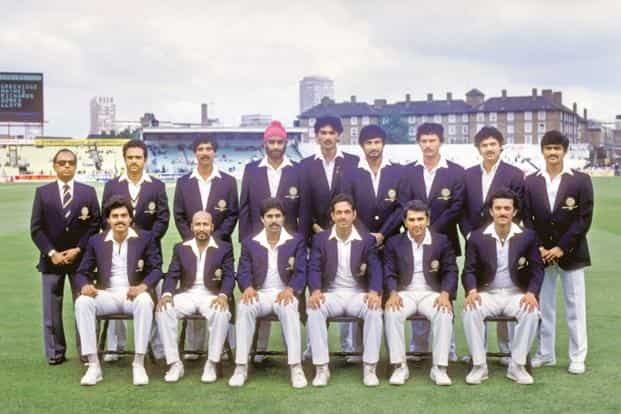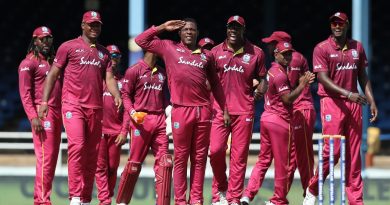1983 World Cup Last: Notable Triumph By Kapil Dev And Co.
1983 World Cup Last: eight intriguing experiences about India’s notable triumph by Kapil Dev and Co. The 1983 World Cup not just changed the manner in which cricket was seen and played in India however it changed India itself.
37 years back, on this very day, when Kapil Dev lifted the pined for the trophy in the famous Master’s overhang, it propelled and united a country of 750 million, and still keeps on doing as such.
We take a gander at 8 bits of knowledge – on the players and exhibitions that hung out in India’s triumphant excursion in the competition.
- KAPIL DEV – THE Most elevated Effect PLAYER OF THE Competition
Kapil Dev’s unbeaten 175 off only 138 conveyances against Zimbabwe at Tunbridge Wells (from 9 for 4 which had before long compounded to 17 for 5) was the second most effective batting execution in India’s ODI history till at that point (after Rohit Sharma’s reality record 264). He ingested the weight of wickets falling around him, restored the innings but then finished scoring at a rate a lot higher than the match standard. Kapil included 126 with Syed Kirmani – the second-most elevated organization for the ninth wicket in ODI history. He scored 65.78% of the all out runs scored by India in the match – it remains the second-most noteworthy extent of runs scored by an individual batsman in ODI history after Viv Richards’ 189 (out of West Independents 272 in Manchester in 1984).
So destroying was his batting show that his exhibition with the ball in the match is totally overlooked – Kapil was the most prohibitive bowler of the match surrendering only 32 runs in his 11 overs – his endeavors going far in holding the Zimbabwe batsmen in line and at last bringing about an essential 31-run triumph for India.
This was a quality that characterized Kapil’s exhibition with the ball all through the competition – the capacity to bowl tight spells and have a high Economy Effect – fundamentally part with runs at a lower rate than the match standard. Protecting a unimportant 183 against the West Non mainstream players in the last, he bowled upwards of 4 ladies and kept a tight rope on the batsmen yielding only 21 runs in his 11 overs. He was India’s most efficient bowler and had an economy pace of under 3 of every four of the 8 matches in the competition. His economy pace of 2.91 in the competition was fundamentally lower than the normal pace of 3.74 for every single quick bowler.
As a player, Kapil didn’t bomb even once in the 8 matches he played in the competition. He was the fifth-most noteworthy run getter and scored at a strike pace of 108.99 – the second-most noteworthy (min. 100 runs) of the World Cup after Bar Swamp. He additionally picked 12 wickets.
Combined with this was his dexterity in the field – running back to take the catch of Viv Richards – maybe the absolute most pivotal turning point in India’s cricket history! Add to the blend his rousing initiative which took India to a noteworthy success and Kapil Dev was the head all-rounder of the competition.
- SANDEEP PATIL – THE MOST Effective INDIAN BATSMAN OF THE Competition
In spite of being at number 16 in the Runs Count and just the fourth-most noteworthy run-getter for India, it is Sandeep Patil who risen as the most noteworthy effect Indian batsman of the 1983 World Cup – as per Effect Record, an all encompassing and far reaching cricket investigative framework which quantifies the commitment of a player comparative with the commitment of different players in the match offering setting to each exhibition.
Three characteristics characterized Patil’s exhibition On the planet Cup – 1) he contributed with valuable commitments frequently coming out to bat under tension when the group had lost early wickets, 2) he scored at a rate a lot higher than the match standard and 3) he brought his game up in the enormous matches – the knockouts – giving his best when it made a difference most.
Patil had a strike pace of 90 in the competition which was a few steps higher than the normal norm (200 or more runs) of 66.36. He had the daringness to counter-assault the most dreaded restriction bowlers – any semblance of Roberts, Marshall, Gather, Holding, Willis and Botham to give some examples.
He thought of a characterizing execution in the semi-last against Britain – 51 off 32 conveyances and supporting acts in the virtual Quarter-Last against Australia (30 off 25 conveyances) and in the last against the West Non mainstream players (27 off 29 conveyances).
3) MADAN LAL – THE BEST BOWLER OF THE Competition
Lal was reliable going wicket-less only once in 8 matches in the competition and 11 of his 17 wickets were of top restriction batsmen (in positions 1-5). Like Patil, he brought his game up in the huge matches – the knockouts. He came back with 4-20 in 8.2 overs in a sink or swim experience against Australia at Chelmsford yet his champion execution came in the last. Against the run of play and with the West Non mainstream players fleeing with the match, he disposed of Haynes and afterward seven runs later guaranteed the prize wicket of Viv Richards, drastically changing the fortunes of the match. He broke the foundation of the West Indian center request seeing the rear of Gomes before long. The force changed. India had the advantage. The rest is history.
MOHINDER AMARNATH – THE THIRD-Most noteworthy Effect PLAYER OF THE Competition
The Man of the Match in the semi-last and the last really ends up being the third-most noteworthy effect player of the competition, after Kapil Dev and Madan Lal.
Amarnath gave two extraordinary all-round exhibitions in the two greatest matches of the competition. In the semi-last at Manchester, he got the pivotal wickets of Gower – the most elevated run-getter of the World Cup, and Gatting, surrendering only 27 runs in his 12 overs before tying down the pursuit with a fearless 46 off 92 conveyances. At Lord’s, he scored a patient 26 and afterward came back with the ball to end a possibly perilous 43-run represent the seventh wicket getting the wicket of Dujon. He got Marshall not long after before asserting the last wicket of Holding to take India to an important triumph.
In any case, Amarnath likewise fizzled with the bat in 4 of the 8 matches in the competition – this diminished his general effect and put him behind Kapil and Lal. Of course at that point, his bowling sway was simply 3% not as much as his batting sway in the competition.
5) YASH Buddy SHARMA – THREE Major Exhibitions IN 3 Major MATCHES
Yashpal Sharma top-scored for India in 3 major matches in the competition. He scored 89 off 120 conveyances in their opener against the West Non mainstream players at Old Trafford assuming the crucial job as India caused a colossal bombshell vanquishing the double cross shielding World Cup champs – this triumph gave the side conviction and motivated them for the rest of the competition.
He at that point scored a quickfire run-a-ball 40 against Australia in the virtual quarter-last at Chelmsford before enrolling a patient 61 off 115 balls against Britain in the semi-last, controling his regular assaulting game, playing to the circumstance.
This commendable large match personality in the greatest competition in his nation’s cricketing history was Sharma’s inheritance to Indian cricket.
6) ROGER BINNY – PICKING THE BEST Restriction WICKETS Reliably
Roger Binny was the main wicket-taker of the World Cup with 18 wickets from 8 matches at 18.66 each. What stood apart was the nature of his excusals. 14 of his 18 wickets were of the top-center request (positions 1-6) restriction batsmen which incorporated the wickets of Lloyd (twice), Richards and Outskirt among others.
He was incredibly predictable and picked in any event one wicket in all the 8 matches he played in the competition.
Binny gave two extraordinary exhibitions – 3-48 against the West Non mainstream players in the opener which incorporated the wickets of Richards and Lloyd and 4-29 against Australia at Chelmsford in which he went through their top-request seeing the rear of Wood, Hookes and Yallop in progression wrecking their pursuit totally.
7) An All out Collaboration FROM INDIA
There were some extraordinary individual exhibitions yet India’s memorable win couldn’t have been conceivable without a total collaboration – that is the thing that the 1983 World Cup venture was.
As per Effect List, upwards of 11 of the 13 Indian players who played the competition, had an Effect of more prominent than 1 and 6 among them had an Effect of more prominent than 2 – this fundamentally implies 6 Indian players carried out the responsibility of multiple players and 5 of them carried out the responsibility proportionate to at any rate one player – this sort of collaboration is uncommon and remarkable!
Curiously, the main two players who punched well underneath their weight and had an Effect of under 1 were the two extraordinary batting stars – Gavaskar and Vengsarkar. The last played only 2 matches however Gavaskar had a forgettable competition scoring only 59 runs in the 6 matches he played.
8) SRIKKANTH TOP-SCORE AND HIS Comparability WITH GAMBHIR
Gautam Gambhir top-scored for India in two major competition finals – against Pakistan in the WT20 last in Johannesburg in 2007 and against Sri Lanka On the planet Cup last in Mumbai in 2011.
While most cricket intellectuals recollect Gambhir’s interesting record, another Indian batsman had just accomplished the accomplishment in excess of two or three decades sooner.
Kris Srikkanth, with 38, was the top-scorer for India in the last of the 1983 World Cup at Lord’s. Curiously, he was likewise the most elevated scorer for India in the last of the 1985 Benson and Supports Big showdown of Cricket against Pakistan at the MCG. In this way, Srikkanth, as Gambhir, top-scored for India in the finals in two of their greatest successes ever.




